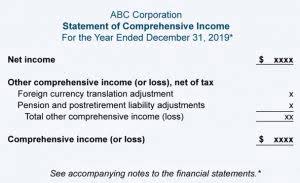Content

There are several different things that notes to the financial statements may tell users. The last type of note to the financial statements lists any claims that creditors may have against a company.
The Ciba Senior Subordinated Notes are general unsecured obligations of Hexcel that bear interest for three years at a rate of 7.5% per annum, payable semiannually from February 29, 1996. The interest rate will increase to 10.5% per annum on the third anniversary of the purchase of the Acquired Ciba Business , and by an additional 0.5% per year thereafter until the Ciba Senior Subordinated Notes mature in the year 2003. In addition, the Amended Revolving Credit Facility was subject to a commitment fee ranging from approximately 0.2% to 0.4% per annum of the total facility. Interest on outstanding borrowings under the Revolving Credit Facility was computed at an annual rate of 0.4% in excess of the applicable London interbank rate or, at the option of Hexcel, at the base rate of the administrative agent for the lenders. The Revolving Credit Facility was also subject to a commitment fee of approximately 0.2% per annum on the unused portion of the facility.
Types Of Financial Disclosures
Also, as a part of legal compliance, entities are required to file a copy of their financial statements with the listed stock exchange. Share CapitalShare capital refers to the funds raised by an organization by issuing the company’s initial public offerings, common shares or preference stocks to the public. It appears as the owner’s or shareholders’ equity on the corporate balance sheet’s liability side. Disclaimer of opinion—A disclaimer of opinion states that the auditor does not express an opinion on the financial statements, generally because he or she feels that the company did not present sufficient information. Again, this opinion casts an unfavorable light on the business being audited. Gains are increases in equity from peripheral or incidental transactions of an entity and from all other transactions and other events and circumstances affecting the entity during a period except those that result from revenues or investments by owner. Expenses are outflows or other uses of assets or incurring of liabilities during a period from delivering or producing goods or rendering services, or carrying out other activities that constitute the entity’s ongoing major or central operation.
- This evolving uncertainty creates a variety of issues and risks, including changes in consumer demand, disrupted supply chains, staff shortages, increased market volatility and changes to how companies operate.
- View a particular note of interest displayed in a separate popup with the other related notes found beneath it, also from a section of the financial statement.
- All of the above acquisitions were accounted for under the purchase method of accounting.
- The methods a company opts to use for both depreciation expense and inventory valuation can cause wild fluctuations in the amount of assets shown on the balance sheet and the amount of net income shown on the income statement.
- Unqualified opinion—This opinion means that all materials were made available, found to be in order, and met all auditing requirements.
Revision reflect the clarification for reporting federal grants provided by federal agencies. Only cities with revenue usually less than $300,000 are required to prepare this schedule. Cities with total revenues usually less than $300,000 are also required to submit a Schedule 22 Questionnaire. Counties are required to prepare the Schedule 06 for reporting year 2020. Cities were required to prepare the Schedule 06 beginning in reporting year 2019. Governmental fund revenues should be classified by fund and by the sources indicated in BARS Account Export. Expenditures should be classified by fund and by the categories indicated in BARS Account Export.
As a practical consequence, if an activity reported as a separate fund meets any of the three criteria, it should be an enterprise fund. Also, if a “multiple activity” fund (e.g., general fund) includes a significant activity whose principal revenue source meets any of these three criteria, the activity should be reclassified as an enterprise fund.
We use the proportion of each interim period’s actual unit case volume to the estimated full year unit case volume as the basis for the allocation. This methodology results in our marketing expenditures being recognized at a standard rate per unit case. At the end of each interim reporting period, we review our estimated full year unit case volume and our estimated full year marketing expenditures that benefit multiple interim periods in order to evaluate if a change in estimate is necessary. The impact of any changes in these full year estimates is recognized in the interim period in which the change in estimate occurs.
The management analyses financial activities based on currently known facts, decisions or conditions. It also discusses the current year results in comparison with prior year, with emphasis on the current year. Management must highlight favorable or unfavorable trends and identify significant events and uncertainties that affect the business.
Notes That Consolidate Financial Statements
[IAS 1.88] Some IFRSs require or permit that some components to be excluded from profit or loss and instead to be included in other comprehensive income. The next type of note that may be seen on the financial statements are those that confirm when financial statements are consolidated. Consolidated financial statements are financial statements that include the financial information for not only one company but also all of its subsidiaries. Use the formatting provided (including the note number/topic sequence) as these schedules are critical to consolidating the notes to the statewide financial statements.
- Management must highlight favorable or unfavorable trends and identify significant events and uncertainties that affect the business.
- In conclusion, all the line items on the financial statements need a background explanation which must be reported for the public to understand and notes to the financial statements do the trick for you.
- The Acquired Ciba Business is engaged in the manufacture and marketing of reinforcement fabrics and lightweight, high-performance composite materials, parts and structures for commercial aerospace, space and defense, general industrial and recreation markets.
- When this is done the opinion is prefaced with the term, “explanatory language added.”
- Other items requiring disclosure are noteworthy events and transactions.
Elected officials should be educated to the fact that accountability may be achieved effectively and efficiently by judicious use of department, program and other available account coding or cautious use of managerial Notes to Financial Statements funds. The original budget may be adjusted by reserves, transfers, allocations, supplemental appropriations, and other legally authorized legislative and executive changes before the beginning of the fiscal year.
The Three Major Financial Statements: How They’re Interconnected
The notes to the financial statements communicate information necessary for a fair presentation of financial position and results of operations that is not readily apparent from, or not included in, the financial statements themselves. Type I events affect the company’s accounting estimates booking on the financial statements. https://www.bookstime.com/ Type II events aren’t on the books at all before the balance sheet date and have no direct effect on the financial statements under audit. The purchase or sale of a division of the company is a classic example of a Type II event. Depreciation is spreading the cost of a long-term asset over its useful life .

An example of this is a lawsuit being filed against company A by company B. In this case, company A will need to list this contingent liability in the notes to the financial statements. Adequate disclosure is an accounting concept confirming that all essential information is included in financial statements. Accounting PolicyAccounting policies refer to the framework or procedure followed by the management for bookkeeping and preparation of the financial statements. It involves accounting methods and practices determined at the corporate level. Financial LiabilitiesFinancial Liabilities for business are like credit cards for an individual.
Fund Types And Accounting Principles
The financial statements typically reflect the financial effects of transactions and events that have already happened (i.e., historical). A financial statements definition is, in the simplest sense, any document that helps show the financial state of your company. The actual items that meet this financial statements definition are generally much more specific, and each has an important role to play. Each type of financial statement will often have a knock-on effect on another type.

The company’s sales to two customers and their related subcontractors accounted for approximately 46% of the company’s 1998 and 1997 net sales . The company performs ongoing credit evaluations of its customers’ financial condition but generally does not require collateral or other security to support customer receivables. The company establishes an allowance for doubtful accounts based on factors surrounding the credit risk of specific customers, historical trends and other financial information. For purposes of this paragraph, settlement in cash includes settlement in cash of the net change in value of the derivative commodity instrument (e.g., net cash settlement based on changes in the price of the underlying commodity). Financial statements are prepared immediately after the adjusted trial balance. Knowing how to record transactions, make adjusting entries, and create trial balances gives you a greater under‐standing of the information financial statements contain.
Capital Expenditure That Is Mistakenly Recorded As A Revenue Expenditure
For private firms it is not, although banks and other lenders often require such an independent check as a part of lending agreements. Finding an appropriate fund type requires a careful analysis since there is not always a clear choice. For example, building permit fees may be accounted for in the general fund or a special revenue fund in certain circumstances, such as when they are partially supported by taxes. However, if there is a pricing policy to recover the cost of issuing those individual building permits, they should be reported in an enterprise fund. Permanent funds do not include private-purpose trust funds which account for resources held in trust for individuals, private organizations, or other governments.
Lower of cost or market means that the inventory will be valued at the lowest replacement cost, whether that be the wholesale cost or the cost that the product is sold at market. There are ten common items that may appear in a company’s notes to the financial statements. The first thing that a company usually wants people to know is what they do, or what they make. Besides explaining the different intangible assets the company owns via an explanatory note, the business needs to explain how it has determined the intangible asset’s value showing on the balance sheet.

The unconsolidated net sales in 1998 for these joint ventures were in excess of $300,000. The section contains a description of the year gone by and some of the key factors that influenced the business of the company in that year, as well as a fair and unbiased overview of the company’s past, present, and future. In the United States, prior to the advent of the internet, the annual report was considered the most effective way for corporations to communicate with individual shareholders. Blue chip companies went to great expense to produce and mail out attractive annual reports to every shareholder.
The purpose of interim financial statements is to improve the timeliness of accounting information. Some companies issue comprehensive financial statements while others issue summary statements.
This government type selection will limit the accounts to those applicable to the selected government type. Although the listing provided intends to be all inclusive, it is possible that needed account codes will not be included. If this occurs, please use the All option to view the entire chart of accounts and contact so the listing can be updated.
For display purposes, the account codes contain decimal points which should be excluded in your annual report. The rate of interest on investments and adjustment of the principal amount of investment each is applicable for income statements and balance sheets. The notes are presented in such a way that the matters relating to financial statements are easily understandable in comparison with those of other companies.
Company
Reported assets, liabilities, equity, income and expenses are directly related to an organization’s financial position. Notes to financial statements are informative disclosures appended to the end of financial statements. They provide important information concerning such matters as depreciation and inventory methods used, details of long-term debt, pensions, leases, income taxes, contingent liabilities, methods of consolidation, and other matters. Schedules and parenthetical disclosures are also used to present information not provided elsewhere in the financial statements. Financial reporting is a broad concept encompassing financial statements, notes to financial statements and parenthetical disclosures, supplementary information , and other means of financial reporting . Financial reporting is but one source of information needed by those who make economic decisions about business enterprises. Companies retire assets once the asset provides no future benefits to the company.
Subsequent events are things that happened after the date on the balance sheet but before the financial statements have actually been issued. I looked through the stock information and made a guess on what stock I wanted to purchase. My mother, in an attempt to help, explained the need to look at the financial reports of each company.
Describe the terms of any convertible equity, dividends in arrears, and reconcile changes in equity during the period. The nature and justification of a change in accounting principle, and the effect of the change. However, if you look at the perplexed and prolonged calculations behind the figures, it would take numerous pages to complete a single financial statement. One thing that the notes may tell users is information about the company, such as what products the company makes or the year the company was founded. Disclosing this contingent liability is a requirement if the company will owe a substantial amount of additional tax penalties and interest if the unsolved examination ends up in the government’s favor.
A business values its ending inventory using inventory valuation methods. The methods a company opts to use for both depreciation expense and inventory valuation can cause wild fluctuations in the amount of assets shown on the balance sheet and the amount of net income shown on the income statement. Information about accounting policies assists financial readers in better interpreting a company’s financial statements, thus resulting in a more fair presentation of the financial statements. A note is needed for each significant accounting choice by the company.
Be the first to comment on "Chapter 3 Notes To Financial Statements"